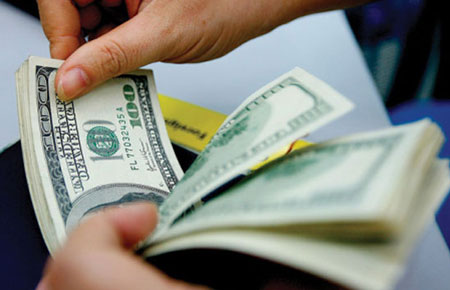SBV efforts may stop dollar lending ahead of schedule

By the end of October growth in dong-denominated loans hit 11 per cent while those in dollars shrunk by 13.6 per cent. Falling dollar lending is in-line with the government’s anti-dolarisation plan which debuted in 2011 and is to run through 2020.
According to Banking Academy deputy director To Kim Ngoc, due to the State Bank’s (SBV) dollar lending restrictions, dollar deposits against total means of payment fell from 19.5 per cent in 2011 to over 11 per cent only by mid-2013.
Economic experts have widely praised the SBV’s commitment to anti-dolarisation.
Le Xuan Nghia, member of the National Financial Monetary Policy Council said achievements in the foreign exchange market such as increased currency reserves and stable exchange rates were all results of the SBV’s anti-dolarisation policies.
“In light of the government’s anti-dolarisation plan, raising and lending capital in dollars will be finished by 2020. And lending in dollars may end even earlier,” Nghia said.
Despite advocating the government’s anti-dolarisation drive, deputy general director of Military Commercial Joint Stock Bank (MB) Nguyen Thi An Binh still has concerns.
“Dollar lending has slowed, but to completely finish it will require a step-by-step process. At MB we maintain a certain level of dollar-denominated deposits,” Binh explained.
Numerous other banks have also said they are concerned about the dollar mobilising rate falling to zero as banks still need dollars to run their operations.
Businesses are also worried about the effort. Nguyen Tien Dung, chairman and general director of Hanoi-based Agricultural Products and Materials JSC (Apromaco) is concerned that importers would find it difficult to make payments if they could not access dollars from banks.
Responding to banks and firms’ concerns, Ngoc said the government was moving toward stopping dollar lending but that the process would go through tiered steps to avoid severe market shifts. He backed up his point by pointing out that the SBV has still maintained the dollar mobilising rate at 1.25 per cent per year.
What the stars mean:
★ Poor ★ ★ Promising ★★★ Good ★★★★ Very good ★★★★★ Exceptional
Latest News
More News
- The promotion of ESG via banking (November 21, 2024 | 09:32)
- Standard Chartered committed to Vietnam’s financial success (November 21, 2024 | 09:24)
- Full ESG adoption the priority for Agribank (November 21, 2024 | 09:07)
- Banks entice youth with tech advances (November 21, 2024 | 08:00)
- ESG represents a shift towards sustainability for banks (November 20, 2024 | 13:00)
- GGGI supports Vietcombank’s debut of $80 million green bonds (November 20, 2024 | 11:20)
- SHB and the ESG journey: creating social value in every step (November 19, 2024 | 15:00)
- Banking sector contributes to ESG, green growth, and sustainable development (November 19, 2024 | 14:42)
- ESG implementation in banking: from awareness to action (November 19, 2024 | 12:08)
- VIR hosts 'ESG in Banking: Leading Through Implementation' conference (November 19, 2024 | 11:14)




















 Mobile Version
Mobile Version